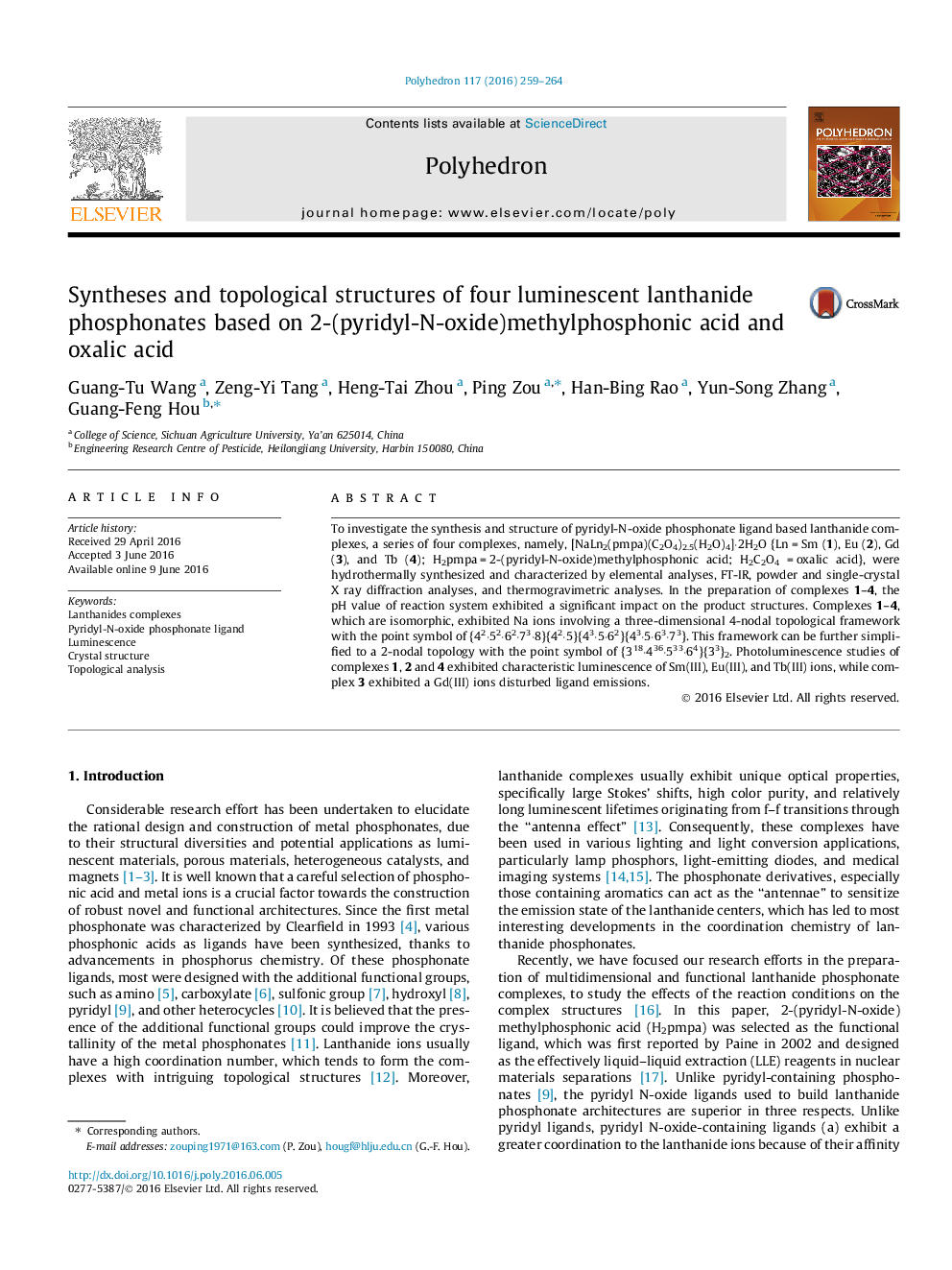| Article ID | Journal | Published Year | Pages | File Type |
|---|---|---|---|---|
| 1336205 | Polyhedron | 2016 | 6 Pages |
To investigate the synthesis and structure of pyridyl-N-oxide phosphonate ligand based lanthanide complexes, a series of four complexes, namely, [NaLn2(pmpa)(C2O4)2.5(H2O)4]·2H2O {Ln = Sm (1), Eu (2), Gd (3), and Tb (4); H2pmpa = 2-(pyridyl-N-oxide)methylphosphonic acid; H2C2O4 = oxalic acid}, were hydrothermally synthesized and characterized by elemental analyses, FT-IR, powder and single-crystal X ray diffraction analyses, and thermogravimetric analyses. In the preparation of complexes 1–4, the pH value of reaction system exhibited a significant impact on the product structures. Complexes 1–4, which are isomorphic, exhibited Na ions involving a three-dimensional 4-nodal topological framework with the point symbol of {42·52·62·73·8}{42·5}{43·5·62}{43·5·63·73}. This framework can be further simplified to a 2-nodal topology with the point symbol of {318·436·533·64}{33}2. Photoluminescence studies of complexes 1, 2 and 4 exhibited characteristic luminescence of Sm(III), Eu(III), and Tb(III) ions, while complex 3 exhibited a Gd(III) ions disturbed ligand emissions.
Graphical abstractFour Na-involving lanthanide phosphonate complexes, featuring new 3D topological frameworks and luminescence, were constructed by pyridyl-N-oxide phosphonate ligand.Figure optionsDownload full-size imageDownload as PowerPoint slide
